Part 40: Marianas Islands: July 18, 1944

With the fleet called away to protect our landing force, we must fight on to finish the job in the Marianas.
Allied Turn 12 (USA): July 18, 1944
Fair, Dry
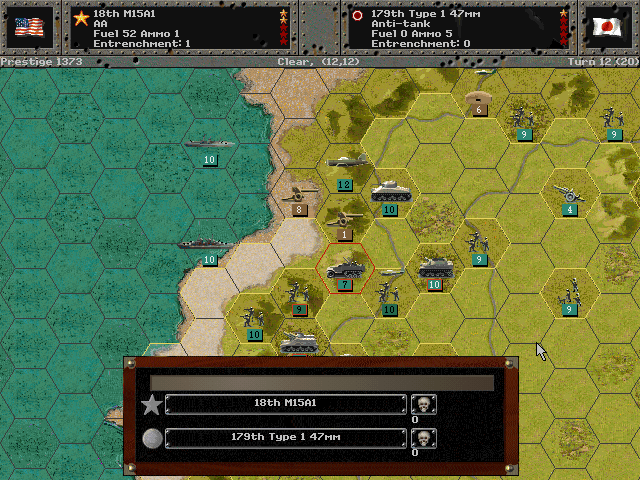
The core takes its time on Tinian to clear out all enemy units.
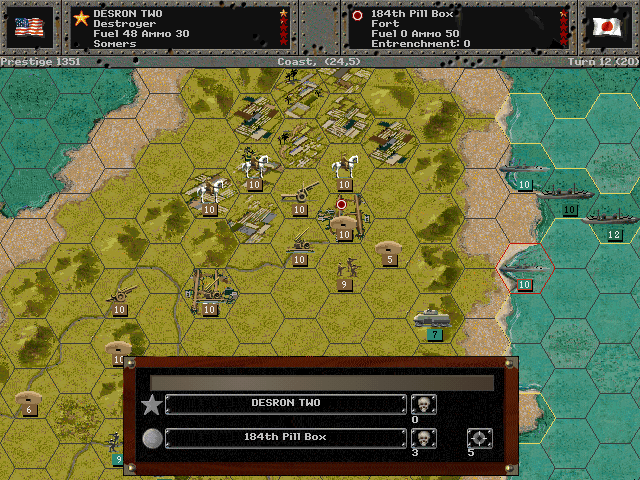
We continue to soften up the enemy forces holding on the airfield, just as reinforcements from Saipan arrive on the eastern coast.
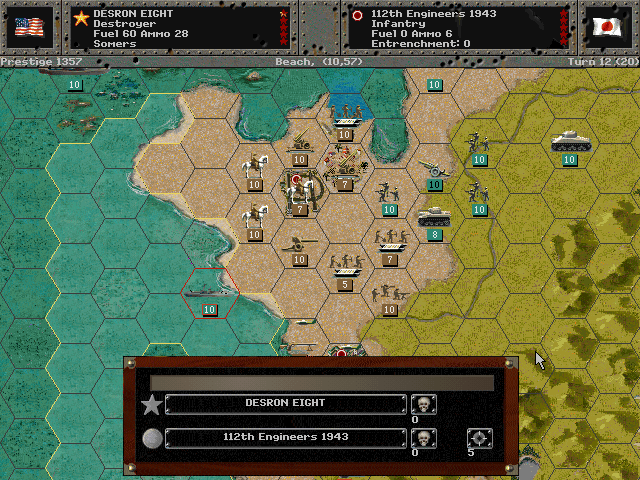
The arrival of our tanks allows the offensive to start back up on Guam.
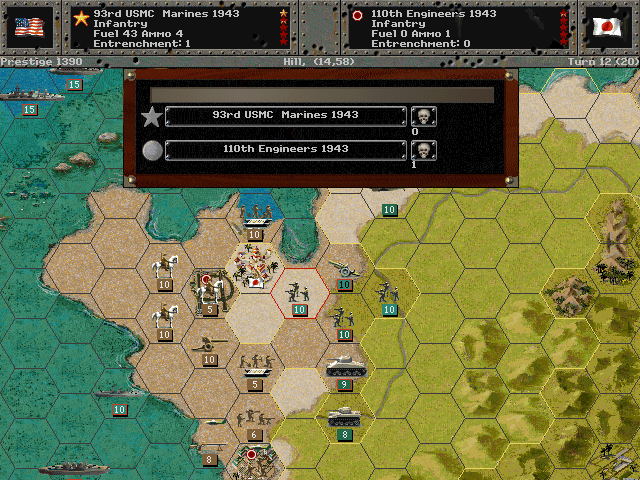
With support from the cruisers offshore, we nearly capture Agana.
Axis Turn 12 (Japan): July 18, 1944
Fair, Dry
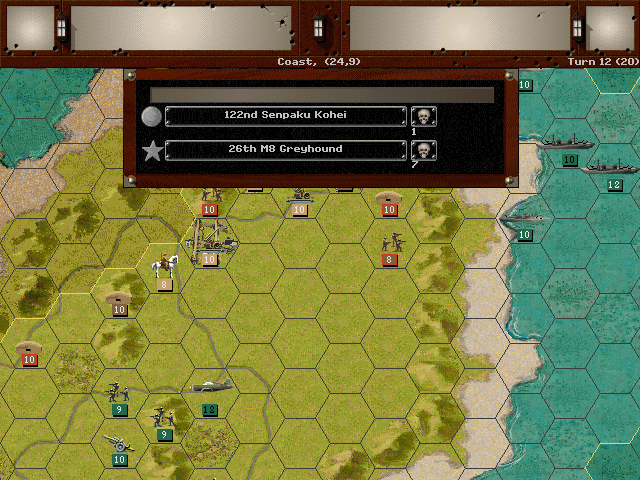
The one place the Japanese attack actually leads to a loss for us. It was one that was entirely avoidable; the M8 scouts simply loitered too long near the airfields.
Allied Turn 13 (USA): July 21, 1944
Fair, Dry

We've received news that the fleet has had a major victory. They aren't back yet to cover us, so the land-based planes keep the enemy's heads down.
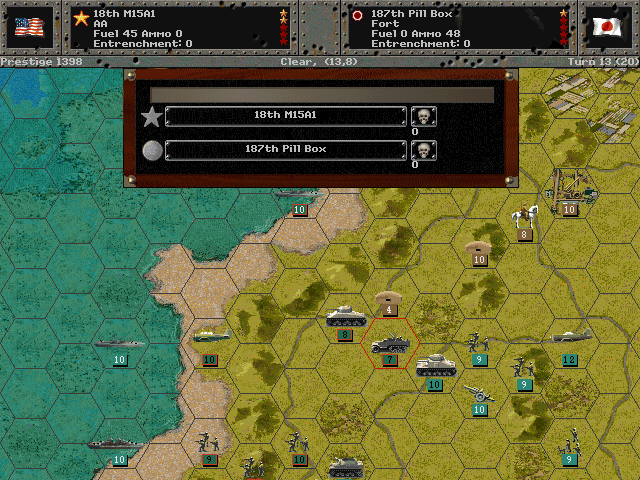
Pillboxes are carefully being dismantled on the islands. We can take our time now.
Axis Turn 13 (Japan): July 21, 1944
Fair, Dry
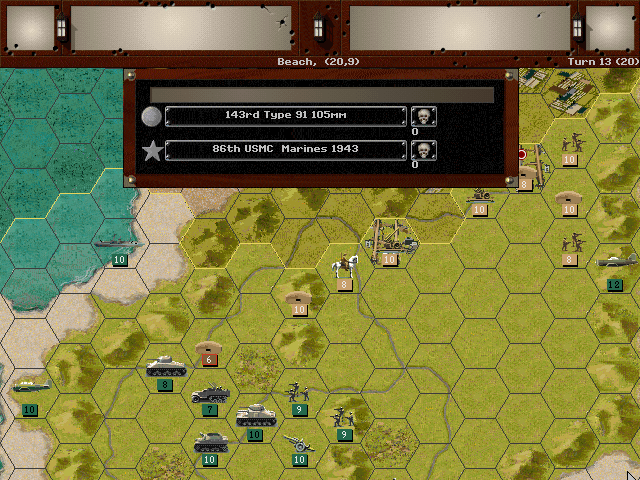
The only dangerous Japanese unit is their artillery, which can now bombard our ground troops.
Allied Turn 14 (USA): July 24, 1944
Fair, Dry

The greener troops get a chance to sharpen their skills in combat as they take out another pillbox.
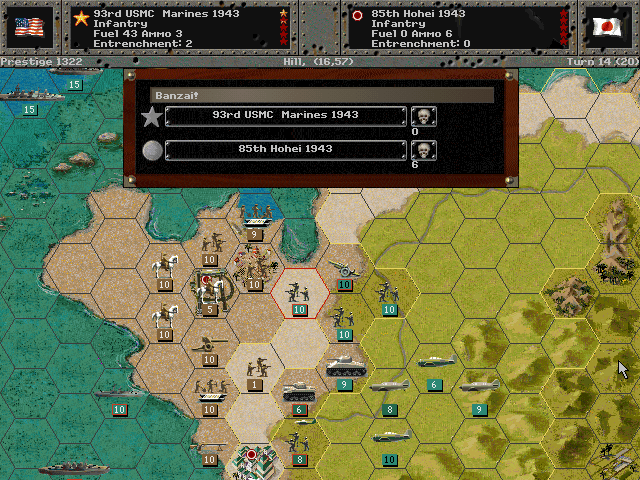
The Japanese will either be pushed back to the shoreline on Guam to surrender, or die in large numbers.
Axis Turn 14 (Japan): July 24, 1944
Fair, Dry
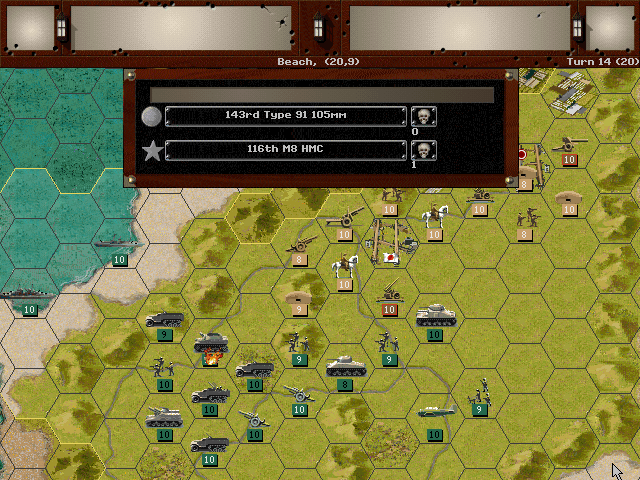
Once again, our lines on Tinian are shelled. It's rather ineffectual, however.
Allied Turn 15 (USA): July 27, 1944
Fair, Dry
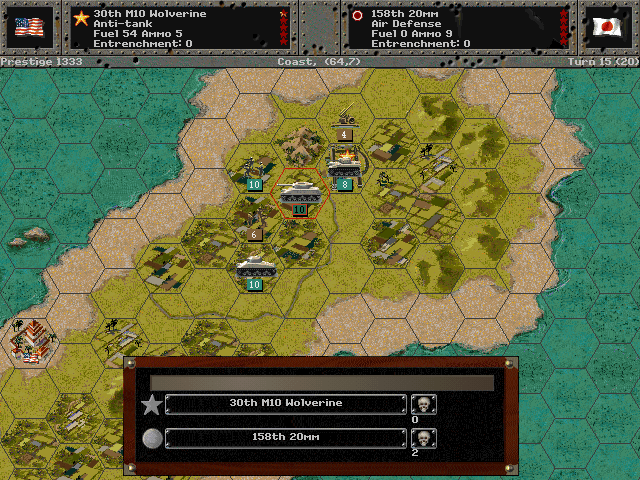
There are a handful of troops still fighting on Saipan. It's like they don't know they've already lost the island.
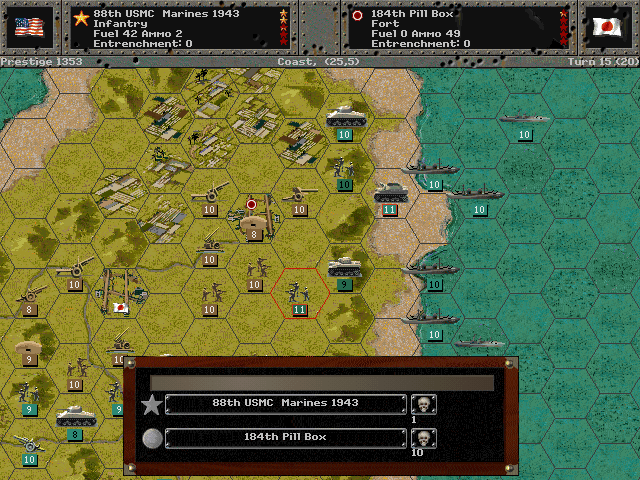
Our secondary invasion on Tinian goes off perfectly, as the line of hills prevented the enemy from spotting our landing forces.
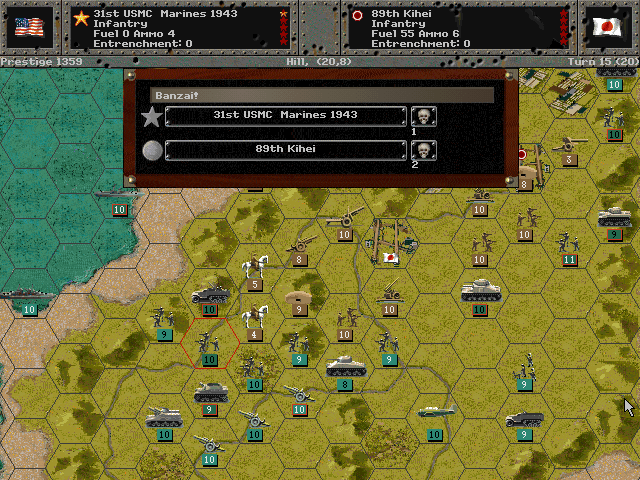
The remaining defenders are weak but determined.
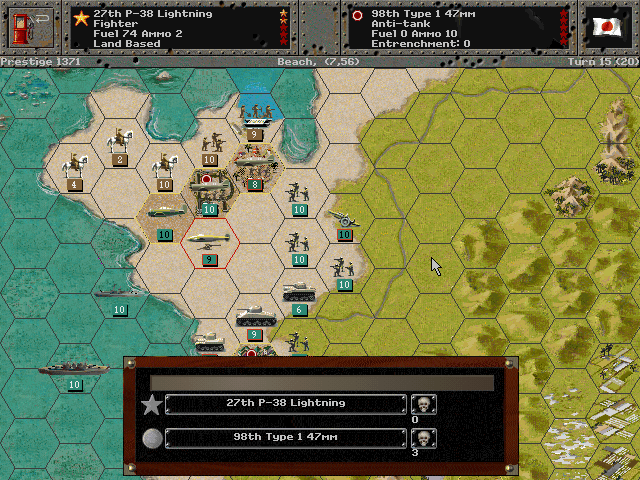
We've established a perimeter at Sumay. We expect a surrender shortly.
Axis Turn 15 (Japan): July 27, 1944
Fair, Dry
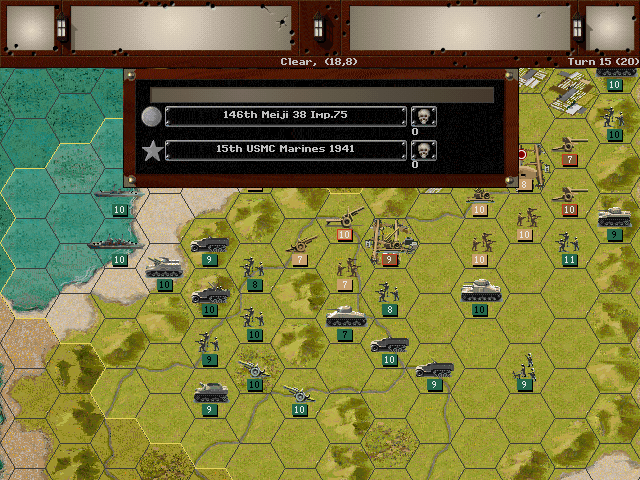
The few guns still firing are hardly having any effect on us.
Allied Turn 16 (USA): July 30, 1944
Fair, Dry
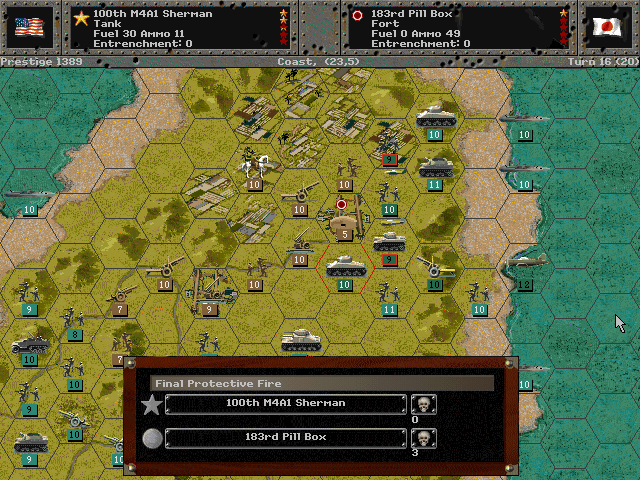
We close in on the final objectives.
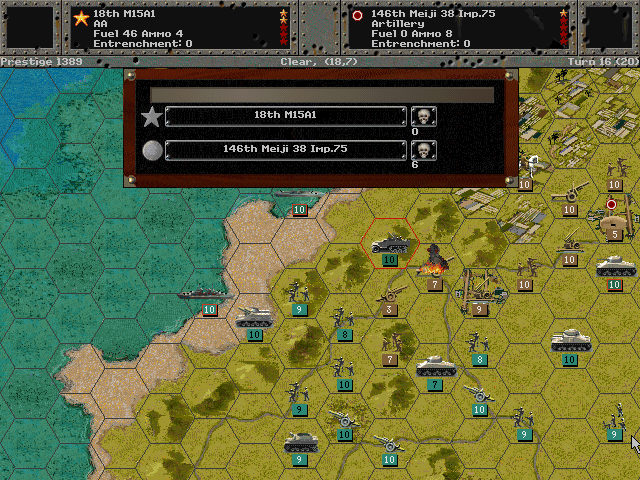
We're coming at those artillery guns from the rear now.
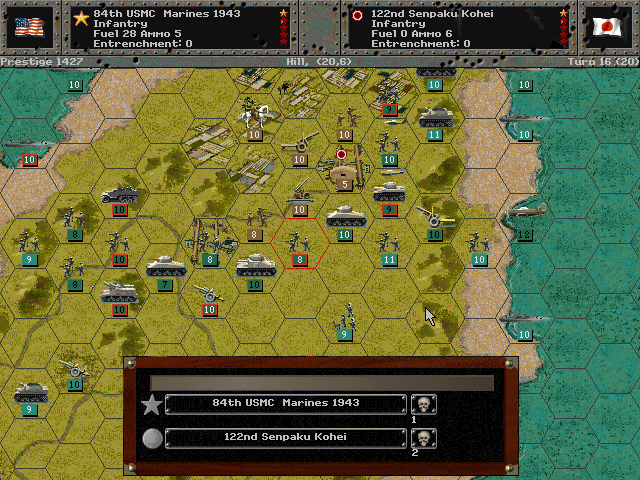
The second Ushi Point airfield is captured.
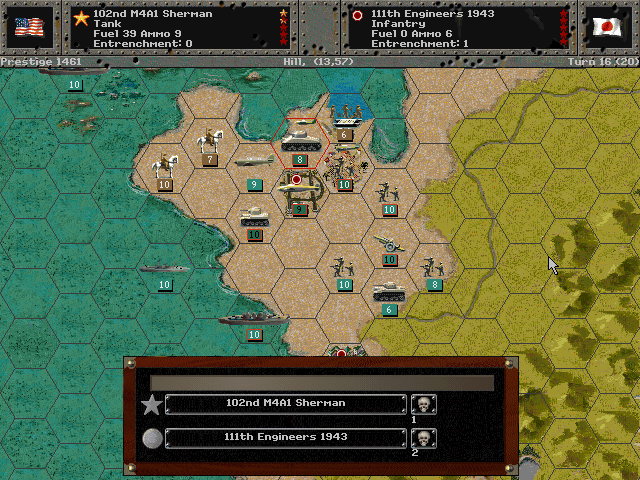
Sumay falls as well.
Axis Turn 16 (Japan): July 30, 1944
Fair, Dry
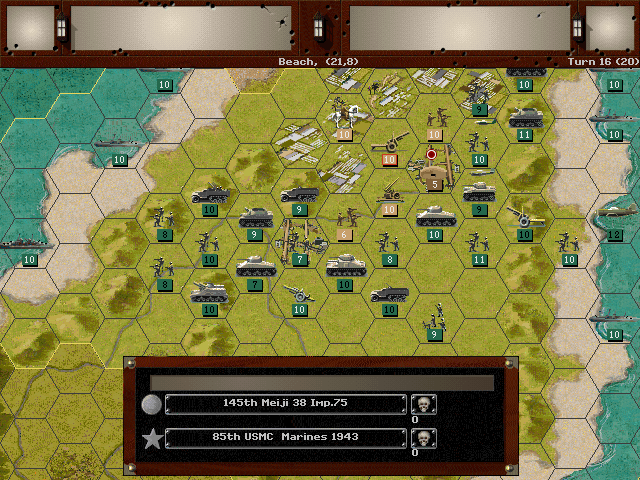
One last gun fires a barrage, and it almost feels like a ceremonial act.
Allied Turn 17 (USA): August 2, 1944
Fair, Dry
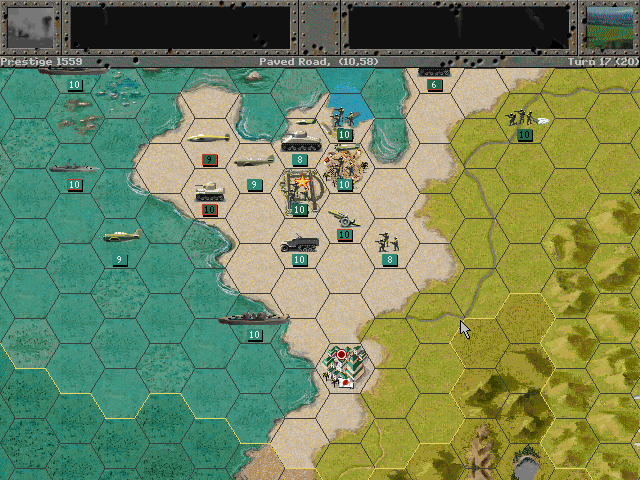
All remaining enemy units on Guam surrender.
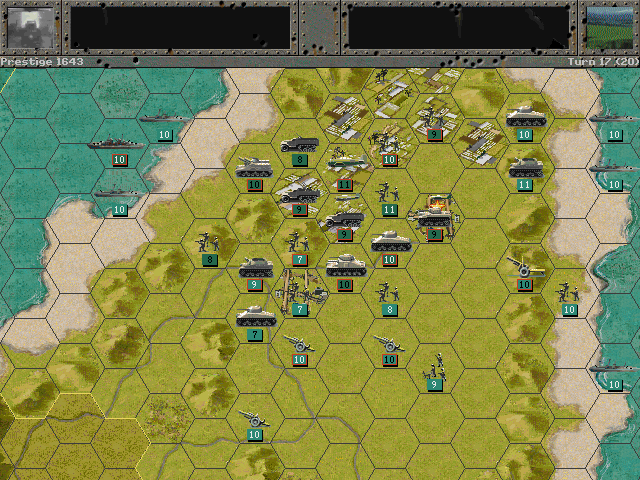
Mopping up is complete on Tinian as well, and the Marianas are securely in our hands.
Result: Decisive Victory (2441 - 790)
Ending Prestige: 2446
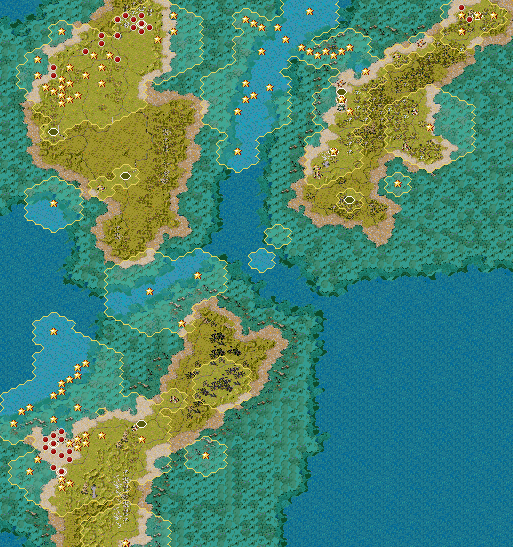
Unit Spotlight
M8 HMC 'Scott'
PG Name: M8 HMC Type: Artillery
Effective Date: 1/44
Value:17 Cost:156 Spot:1 Move:7 MM:Track Trans:Naval Fuel: 46
Init:3 Range:2 SA:11 HA:10 AA:[2] NA:0 GD:7 AD:6 CD:1 TT:Hard Ammo:7
The M8 mated the M5 light tank chassis with a 75mm gun in a larger turret. As one of the first available mobile artillery units available during the war, it saw extensive use by American forces until around 1944. At that point the 105mm gun started to become more common. There was a plan to improve on the M8 by using an M4A3 base, but as it turned out the M18 Hellcat had already solved that problem. Unlike the other mobile guns, not many of these were used by allied nations during the war, although post-war a number of them were sent to France and later saw action in Indochina.
In-game analysis: Another fast but kind of weak gun, similar to the M3 GMC. This is a definite improvement over the M3, and does not cost any more than that one did. A little mobility is sacrificed, but this one can defend reasonably well against other units (tanks especially).
Independence-class Light Carrier (9 built)
PG Name: Independence Type:Carrier
Effective Date: 1/43
Value:15 Cost:270 Spot:3 Move:6 MM:Deep Naval Fuel: 102 Capacity:2
Init:3 SA:0 HA:0 AA:[11] NA:0 DA:0 GD:15 AD:3 TD:10 TT:N/A Ammo:40
Special: Radar
When it seemed as if the new fleet carrier ships would not be available until 1944, Roosevelt ordered the conversion of some Cleveland-class light cruisers into light carriers. The result was something slightly stronger than most escort carrier, but not really capable of carrying any more aircraft than the escort carriers of the time. As it happened, the Essex class arrived sooner than expected, and these carriers tended to be used more often to transport aircraft than to launch them into combat.
In-game Analysis: This is the only American light carrier that's not terrible. Given that it has more than the minimum capacity, moves as fast as any other carrier, and isn't going to sink at the first shell that touches it, a fleet composed of several small carriers can be made viable. Three of these might be better and cheaper than one Essex. That assumes there is space in the core for them (typically there is).
Republic P-47 Thunderbolt
PG Name: P-47B/P-47D/P-47N Thunderbolt Type:Fighter
Effective Date: 7/43 / 3/44 / 7/45
Value:30/37/42 Cost:360/444/504 Spot:3 Move:10 MM:Air Fuel: 72/72/108
Init:5 SA:3/5/5 HA:2/5/4 AA:14/16/19 NA:0 GD:9/10/10 AD:14/18/16 TT:No Ammo:8/4/5
Although it was not introduced until 1942, the P-47 became the most-produced American plane of the war, with over 15,000 made by the time of the war's end. Republic had nearly won a contract to deliver a fighter in 1939, but the outbreak of war in Europe changed the US Army's requirements, and the company went back to the drawing board. What they ended up with was a very heavy and 'fat' fighter by most measures, but also one that was incredibly tough and loaded with firepower. It was not much of a dogfighter, but stood a good chance of killing anything it could get the drop on. In less favorable engagements it could usually survive the first hit before escaping or hitting back. Although the P-47 achieved the greatest fame in Europe, many served in the Pacific Theater as well. The later models increased the engine power and added the ability to carry drop tanks, bombs, or rockets under the wings.
In-game Analysis: This is a model that keeps getting tweaked, with some things improving but also with something being lost each time. The P-47B is fairly mediocre, especially when compared to the other fighters that are available. The P-47D is probably the best in the series, and compares favorably to the Hellcat. The P-47N is still pretty good, but the jump in price and the slight loss of combat strength make it less desirable, especially since there are superior planes available in 1945.